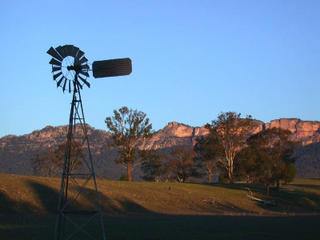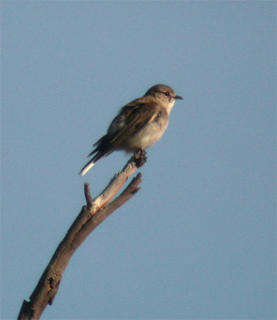2005-09-08 Where is my Golden Angel?
 Scene along Glen Davis Road, Capertee Valley
Scene along Glen Davis Road, Capertee Valley08 Sept 2005 was my 4th trip to Capertee Valley. There must be a good reason for visiting this part of NSW - the birdlife is rich especially there are many australian birds that are not easily found at other parts of Australia.
(A commonly seen sign boards in Capertee Valley, this is not national park)
However, a reminder to anyone who is not familar with this area that - Capertee valley is actually not a national park or a nature reserve! It is a valley surrounded by Wollemi National Park and Gardens of Stone National Park. In fact the whole area consists of farmlands, scattered woodlands and small villages. Most importantly, almost all the areas consists of private properties and therefore trepassing to this properties is NO NO.
Alas, I have no luck of Regent Honeyeater in this trip. The active nest that I discovered about 2 weeks ago had been abandoned. Somemore I hardly heard them calling this time. It was certainly not a good day for me and not a good day for Regent Honeyeater either. Looks like the place has become suboptimal for this endangered bird. (However, according to a friend who had visited Capertee Valley few days afterwards indicated that the situation is not that pessimistic. That means I should make another trip to catch up with them again)
All the photos shown in this blog were taken same day on 8 September, with the exception of two photos of Regent Honeyeater that were shot on my 2nd trip on 23 July.

(Glen Alice Road, Capertee Valley)
 (Glen Alice Road in Capertee Valley. With Wollemi National Park in the backdrop)
(Glen Alice Road in Capertee Valley. With Wollemi National Park in the backdrop)















